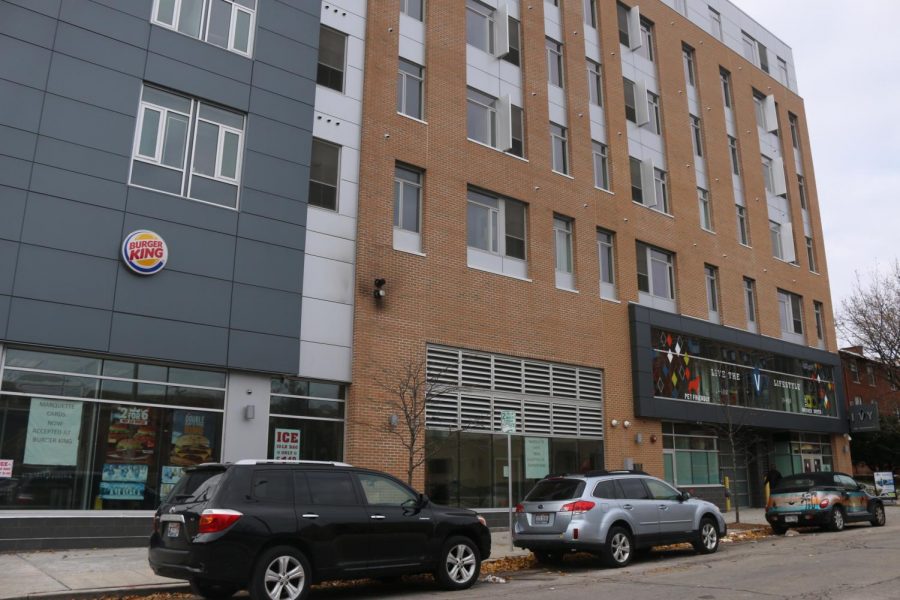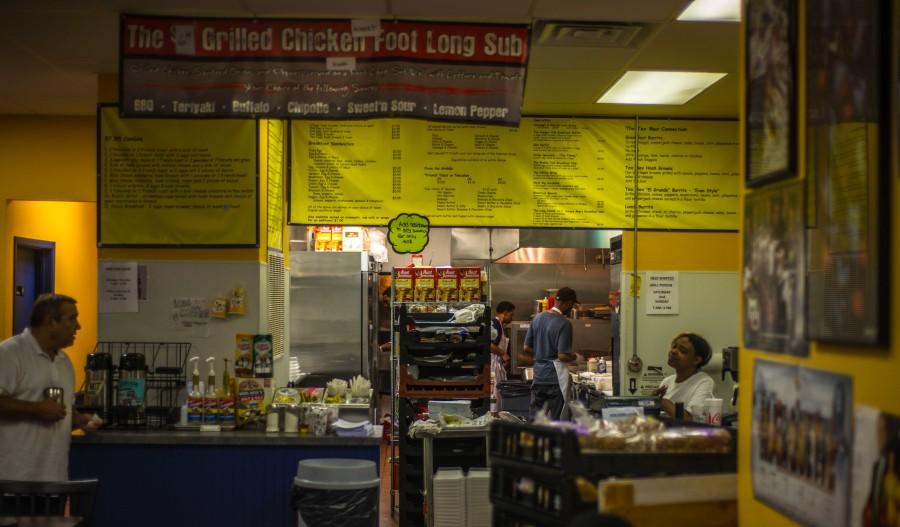A carbon monoxide detector in an apartment in The Ivy woke up residents in a neighboring apartment Nov. 3 at 7 a.m. after Burger King’s furnace began to leak.
The Ivy apartments, located on 811 N. 14th St., sit right above Burger King.
Mitchell Smith, the chief operating officer of The Scion Group that owns The Ivy apartments, said when the alarm went off, the Milwaukee Fire Department came to the scene to investigate. When the fire department arrived, Smith said the carbon monoxide originally detected was gone.
Then a few days later Nov. 8 at 6 a.m., another carbon monoxide detector in a different apartment unit in the building went off and the fire department returned. This time, they found that the source of the leak was one of two furnaces in Burger King.
“Upon investigation of apartment 212, the residents’ (carbon monoxide) alarm was sounding and our (carbon monoxide) meter was showing between 35 and 40 ppm (carbon monoxide) in the apartment with the highest concentrations being in the bedroom closest to Wells Street,” the fire department’s incident report stated.
Carbon monoxide is measured in parts per million. The Consumer Product Safety Commission reported that symptoms are usually not noticeable unless the levels exceed 70 ppm. However, health effects can vary from person to person.
“Ultimately, we would rather not have any level of carbon monoxide in the building, but fortunately we’ve been able to rectify that and get that back to that level, but it never even reached that 70 parts per million, thank goodness,” Smith said.
The residents were evacuated from the apartment and atmospheric samples were taken from that apartment and the neighboring apartments, according to the incident report.
In an email notice sent from The Ivy’s manager Jenika Williams to residents, The Ivy said the apartment staff is taking steps to ensure that Burger King’s furnace will no longer leak. The email told residents that there was no longer any detectable (carbon monoxide) in the building and no apartment exceeded a reading of 40 ppm.
“We believe all residents are safe,” the email said. “Burger King will not be permitted to re-start or to operate its heating units again without the approval of the Fire Department and We Energies after confirming any necessary repairs.”
Aaron Lipski, Milwaukee Fire Department Deputy Chief, said their meters showed levels of zero ppm after all affected apartments were ventilated.
Smith said that although the leak was unfortunate, The Ivy, fire department and We Energies did everything they could to fix the problem.
“You cannot ever prevent situations like this from happening,” Smith said. “If you could completely prevent them, you wouldn’t need fire monitoring panels, you wouldn’t need carbon monoxide detectors, and so on and so forth. So the system worked the way it is designed to work, the way it’s supposed to work, and we’re really fortunate that ultimately nobody was hurt as a result of that leak.”
Lipski said after the fire department assessed the situation, ventilated the rooms and found the source of the leaks, they called We Energies to recheck their findings.
“We do this as a measure of redundancy and also because they bring a lot to the table,” Lipski said. “We bring We Energies to the scene and we did that in both cases. They bring their own meters and they also have the ability to dig into things further. What we can really do is shut it down. They can get into specifically what is causing the problem.”
The fire report said that We Energies confirmed the presence of carbon monoxide and determined that Burger King was emitting 1,000+ ppm to the exterior of the building. From there, it was entering apartments.
Smith said The Ivy staff did everything they could to allow the fire department full access to the building, and he said the general manager was at the scene within 20 minutes.
“Ultimately, everything worked the way it was supposed to,” Smith said. “We have carbon monoxide detectors in the building in all the units to the extent that if carbon monoxide is detected, that alarm goes off. It alerts the fire department automatically through our fire monitoring system.”
Lipski said that he believed everything went according to plan.
“It’s a fairly bread and butter incident for us,” Lipski said.
Julianna Long, a senior in the College of Arts & Sciences, said she was woken up by the alarm Nov. 8 and immediately called the apartment’s emergency maintenance line.
Carbon monoxide was detected in the apartment below Long’s and she said that her apartment had a level of about 25 ppm. She and her roommate had to evacuate while their room was being sampled.
“We had to go to the hospital to get checked for carbon monoxide levels in our blood,” Long said. “They had sent two people from the energy company here to check it out, and the man told us to go get tested.”
Long said she and her roommate chose to stay with her roommate’s family Thursday and Friday night.
“We were kind of along the lines of, ‘Honestly, we probably shouldn’t have any carbon monoxide being leaked into our room, we don’t really feel safe living here,’” Long said.
Smith said The Ivy does a lot to ensure that these situations are handled correctly.
“Our building is professionally built and designed for students, so it has a fire monitoring panel to which all of the alarms are connected,” Smith said. “So the way that we assist is making sure that when there is a life-saving issue that does occur in the building, that the proper monitoring equipment is in place to detect that event and that event is then relayed immediately to the proper municipality organizations.”
Kristina Sullivan, a junior in the College of Communication, lives below the first apartment affected.
“I’ve always felt safe in my apartment,” Sullivan said. “I know that it happened in this building and it could happen anywhere in the building, but I mean I wasn’t really worried just because I know that The Ivy is really on top of things. They had WE Energies come out and they want to make sure their residents are safe always.”






Anna • Nov 13, 2018 at 3:28 pm
The first incident did not happen as written. The fire department did detect carbon monoxide on scene. The arrived at 7am and tested for carbon monoxide from the hallway at the crack of the door on room 310. After levels of 30-32ppm were detected, and there was no response from knocking on the door, they forcefully entered in fear residents may have been incapacitated. Upon entering they found that no one was home but detected CO levels of 60ppm. The cause was determined to be the furnace inside of the room. From there 310 was told it was safe to live in but both residents chose to stay at their parents homes because they felt unsafe. Then 5 days later when the next units alarm went off carbon monoxide levels were found in their room again of 15-20ppm. The entire week prior to the first alarm one resident was experiencing multiple symptoms of carbon monoxide poisoning, but never realized what it could be until alarms started going off. Long term exposure to low levels of carbon monoxide can be quite detrimental to ones health. If our alarms are attached to a system that calls authorities why was it that our neighbor had to call 911 before anyone (management included) knew what was going on. This “fairly bread and butter incident” could have caused anywhere from permanent brain damage due to lack of oxygen or even death.